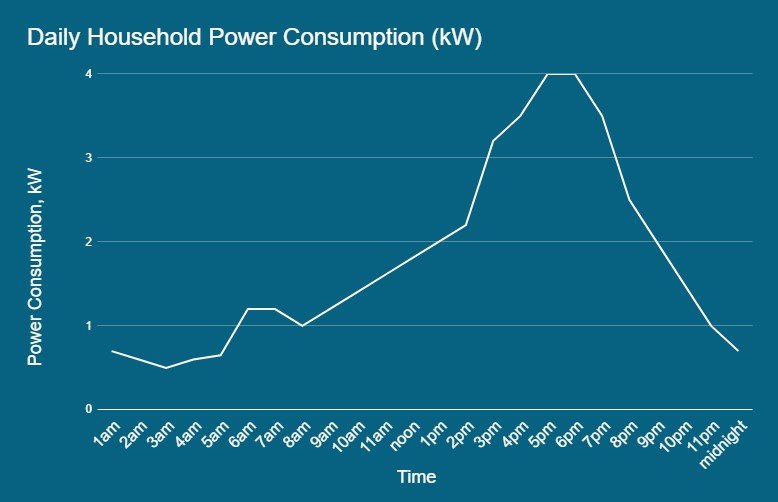A battery backup system coupled with a time-of-use rate structure can, by shifting your power consumption times, lower your electric bills dramatically (even without solar panels) while protecting you from power outages.
If your utility uses time-of-use metering, you have a great opportunity to significantly lower your electric bills for years to come. This strategy doesn’t require any solar panel installation at all (though you can add solar for additional savings).
The secret is a new rate structure used by some utilities for residential customers that charges higher rates for electricity during the day, and much cheaper electric rates at night. This time-of-use metering financially encourages customers to shift their power use away from peak times when power generation requires expensive peak-load generators to meet demand for only a few hours.
What Is Time-of-Use Metering?
Time-of-use metering is a rate structure that varies based on the time of day you consume power. In these plans, power is expensive during peak use times like afternoon and early evening, and cheap during times when power use is typically low, like the middle of the night.
Peak times are when communities use the most electricity. For instance, in some households in the summer, the peak four hours in the afternoon can account for almost half of the entire day’s power use. To discourage power use during those times, power companies put a big premium on the cost of peak power.
Example power use by hour in the summer. If you buy during peak hours under a time-of-use rate, you’ll be paying far more for power. (Data from customer of Cromwell Solar.)
In Missouri (and soon Kansas), one major utility, Evergy, uses a time-of-use rate plan. Since late 2023, the power homes and businesses buy weekdays between 4 and 8pm can cost over $0.30/kWh (with fees and taxes). Compare that to midnight to 6am when power can cost one tenth as much — coming in closer to $0.03/kWh! When time-of-use plans are in place, you can save serious money by moving your power consumption from peak to off-peak times.
When these plans are in place, the utility recommends shifting your power use from peak to off-peak times, but, as doing laundry at 3 am is not for everyone, a battery system is a much better option.
Whole-Home Battery System for Time-of-Use Metering
A whole-home battery backup system is a great investment for homes with time-of-use utility plans. Cromwell Solar can install and program a new battery system to charge itself up from the grid during those wee hours of the morning when electricity rates are low, storing the power so that during the peak afternoon hours you are using the cheap power stored from earlier. We can get a full day’s worth of power charged into your home battery backup system in the off-peak hours giving you all your electric use for only $0.03 per kWh!
Average Savings from a Home Battery Backup System
Your savings from a whole-home battery are based on the amount of power you are consuming and the difference between your average electric rate (often about $0.15/kWh) and the lowest off-peak rate (often $0.03/kWh). Using these numbers a home using a typical 1,500 kWh per month could save $180/month (1,500 x difference of $0.13) using their battery backup!
The cost of the battery backup system will depend on the size of the system needed to meet your energy demand and how long you’d like to have power outage protection. While incentives for home battery systems used to require a solar panel installation as well, as of 2023 you can get a 30% tax credit on a battery backup system even without solar.
We have always been able to make an argument for installing a silent whole-home backup battery system to provide the safety and security of seamless uninterrupted power. But, with time-of-use electric rates coupled with the new battery tax credit, installing a home battery system can pay for itself in less than 12 years! We can help estimate how much you’d save on your energy bills with a whole-home battery system. Contact us today to get a free consultation!

